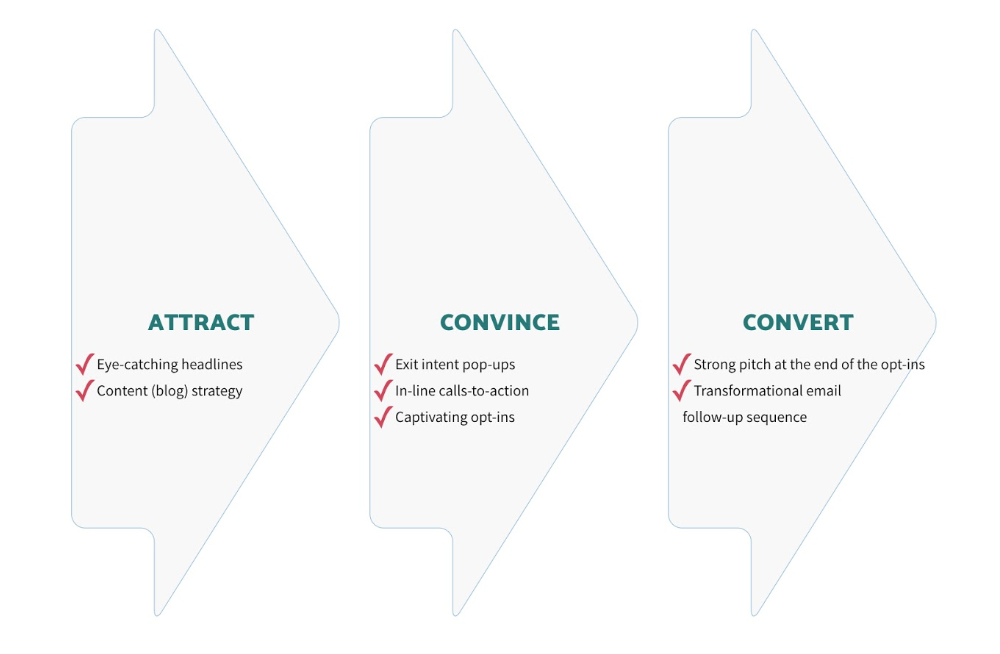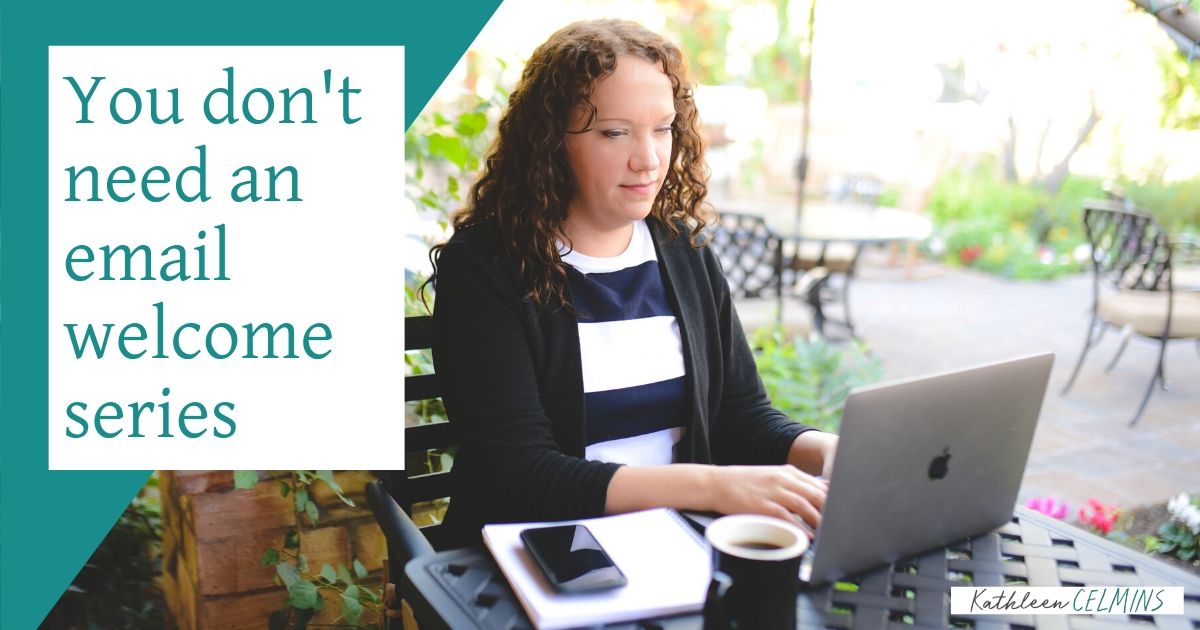E-mail welcome series: why you don’t need them.
I know that’s different and somewhat counter to what just about everybody else says, but you don’t need to welcome people to your world.
They are coming into your e-mail series because they wanted something.
They opted into something: a webinar, a quiz, a checklist, a PDF. Something that they said, ”Okay, whatever this is, this is important enough so that I am going to trade my e-mail address for it. I’m going to let you into my inbox.”
They don’t really care about you. I know that sucks.
They will care about you, but not yet. Because they don’t know you yet.
Think about going to a party. You get invited to a party as a friend of a friend. You didn’t know anybody there, but you talk about yourself for an hour. That’s kind of what an e-mail welcome series is like. “Who is this person? How did they get – they are not coming to the next party, right?” they ask the mutual friend, “because if that person comes I’m not coming.”
Your e-mail series’ job is to attract people to your list, to convince them to sign up, and to convert them into sales.
When you think that they need to know your back story, or that somehow they’re interested in you beyond what you can do for them, that’s where you get it wrong. If you’re selling yourself as an expert in something you need to tell them enough so that they believe you. That’s a good thing to do using other people’s words; screenshots, pictures, videos, other things that have somebody else tell them how great you are, so you don’t have to do that.
The e-mail part is the most important part. You can have this really amazing webinar slide deck, you can have an excellent product, but if you don’t build the bridge that takes somebody from free content to, “Hey, I’ve got my wallet out, how can I spend money with you?” then I think you’re missing the entire point of the whole thing.
You don’t need to create another landing page, another opt-in, or any fake work that feels good.
What you need to do is you need to break down your e-mail series’. In a sense, I’m letting you off the hook. You don’t have to welcome people to your world. You don’t have to tell them the first time you ran into a computer. You don’t have to tell him why you’re an expert in macrobiotic eating or something like that. Not at first.
Down the line, building trust, getting them to know why you put as much of your heart and soul into your product or service or solution or hourly consult – any of that, that is really, really useful down the line. But at first, you just need to connect what they downloaded for free to how they can pay you, and you need to make it as easy and straightforward as possible.
Each opt-in, each lead magnet that has a name and an e-mail form needs its own e-mail series. I took away one task and I’m replacing it with 5, sorry. They can be similar but they shouldn’t be identical because if somebody’s downloaded something and then they download something else they shouldn’t get the exact same words. You’re already going to feel like you’ve repeated yourself a lot, because repetition is how people learn. Somebody needs to hear from you 7 to 12 times before they open up their wallet.

When you work on your e-mails, you’re going to feel overwhelmed.
I’m going to tell you this right now – you need 5 to 15 emails for every single download you have. Just start with the one that’s getting the most downloads right now so it’s not super overwhelming because otherwise, you’re going to have to write a hundred and five e-mails this week. That would be terrible.
What you should do is, if you have a webinar that’s five mistakes, that’s five emails right there. Do not refer back to your webinar. Remember that the webinar, the lead magnet, the point of the lead magnet is to get their e-mail address. The point of the lead magnet is not to get them to read the lead magnet, or watch the video, or do anything. Once they give you their e-mail address you are done. You do not have to refer back to minute seven of a webinar. You skip all that and just say, “mistake number three: not having enough (whatever).” Then go into that. Every single e-mail is going to have some proof about why that’s a mistake, what somebody did to adjust that mistake, a before and after.
You sprinkle in some pure testimonial emails, and you’re up to eight maybe nine e-mails already without really having to think about that rubric.
Finish off with some strong calls to action and you’re done.

